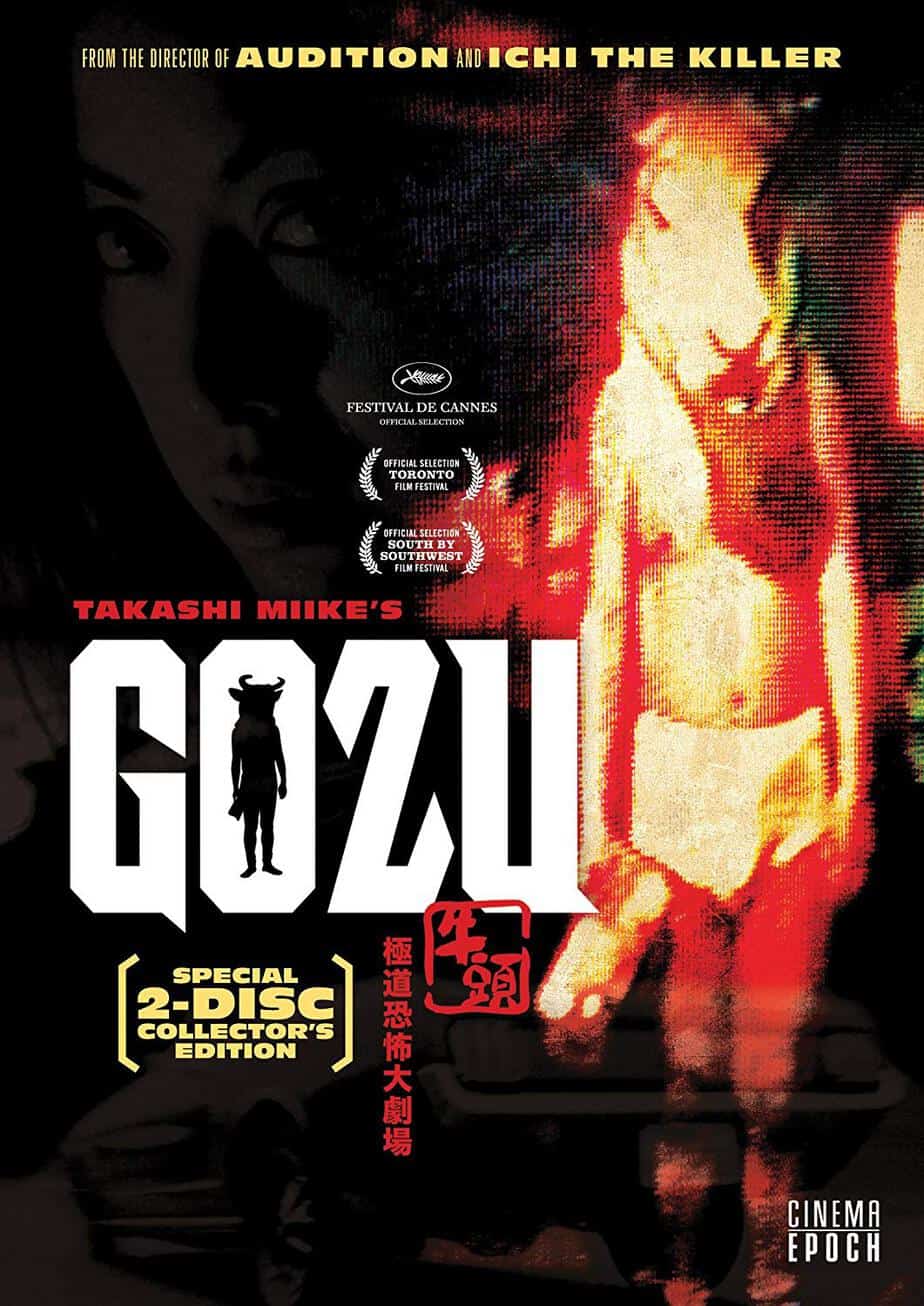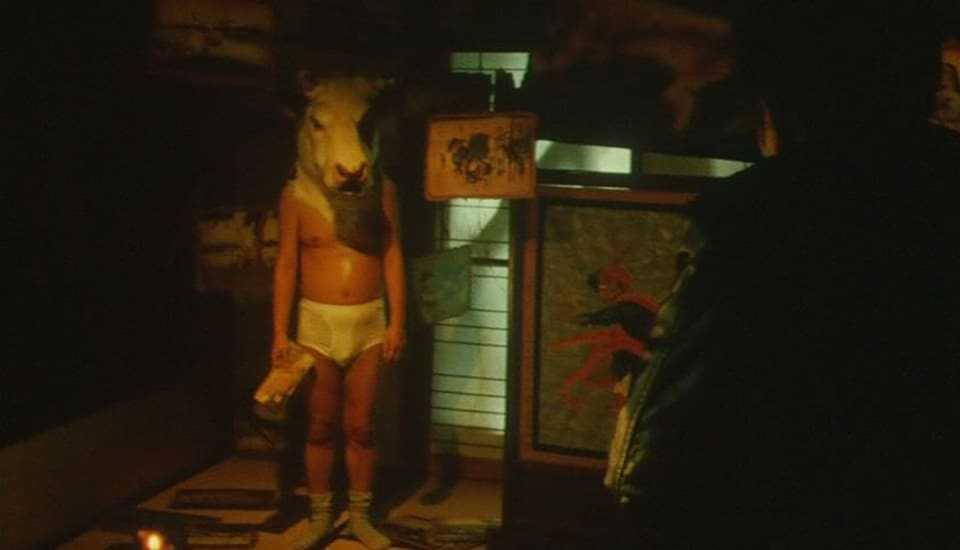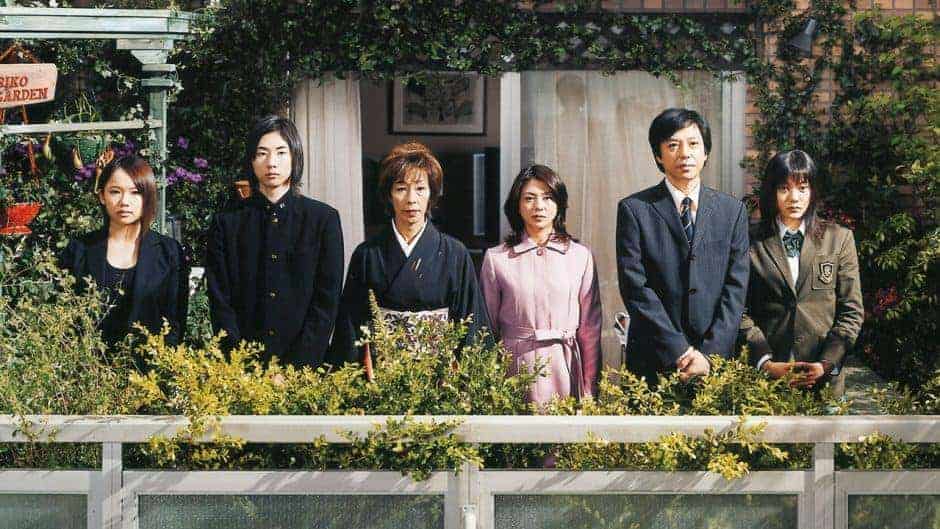In his 2005 book “Save the Cat!”, the renowned tutor and screenwriter Blake Snyder argues that one tool to make a successful screenplay is to effectively utilize either “save the cat” or “kick the dog” trope in the first five minutes of the film, i.e. make a character either save a cat or kick a dog, in order to give us a clear signal of his intentions if he's good or evil.
In Takashi Miike's fabulous “Gozu”, the maniacal yakuza Ozaki doesn't just kick the dog. He thrashes the living hell out of it, and finishes his beating with swinging it round and round on the leash and smashing it into the restaurant front window in bloody bits at the five-minute mark exactly.
Buy This Title

After Ozaki's (Shô Aikawa) violent antics have become a liability, the boss (Miike mainstay Renji Ishibashi) orders his minion Minami (Hideki Sone) to take him to Nagoya and get rid of him. Reaching there, Ozaki suddenly vanishes and Minami's ensuing journey to find the lost yakuza quickly becomes a bizarre and disturbing one.
Miike never shies away from exaggeration (as also witnessed in the opening scene described above), and he really lets loose once Ozaki is out of play and Minami is left on its own to sort out the disappearance. He gleefully piles freaky characters on Minami's way, and the more the poor guy concentrates on the matter at hand and tries, the less he understands what is going on. He tries desperately to apply logic, but the world doesn't correspond.
It's easy to watch “Gozu” as a sort of psychedelic nightmarish headtrip, but it also fits into this period in Miike's career, when he seemed to have been influenced by the metaphysical – “Gozu” was shortly followed by the Buddhist splatter movie “Izo” and the ghost horror “One Missed Call” (and, admittedly, a slew of others). “Gozu” borrows quite notably from Greek Mythology. The journey of the two yakuza can be seen as a trip to the underworld, Minami first transporting a “dead man”, a man condemned to death, and then possibly a really dead man, because it's a bit unclear if Ozaki loses his life in a couple of road accidents. If yes, his passing is very incidental. He significantly becomes “less and less alive”, until they suddenly reach the river – possibly a version of Styx.

You could argue that the troubles start from when Minami throws a rock in the river. The sound can be interpreted as a trigger of a hypnotic state where nothing is real, death and life intertwine, as do dream and reality, the past and the future. Nagoya is a slow and tedious nightmare where the logic of the scenes is often constructed in the same way as dreams are. He meets a wide array of characters, and the more we get into that quagmire, the more it starts to look as if we have already crossed over to the other side, or it is at least a sort of halfway-house for disgruntled spirits, condemned to roam the cityscape with pained expressions. Nagoya is a version of hell – the kind where time is indeed eternal, and the experience of living there is infernal.
In the course of the film it appears that some characters they meet should already be dead, and probably are. Minami gets a runaround, following the tracks of Ozaki, until he reaches the hotel room for the breathtaking final sequence.

Minami's strong emotional attachment to Ozaki is one motive here, that is always present and grows stronger as the film unfolds. It's not hard to see here that Minami's feelings might be deeper, and he gets a green light to unleash his homosexuality when Ozaki assumes the shape of a lady in a strange reincarnation sequence. In that respect, Minami's confusion and disorientedness can be seen as an expression of his sexual insecurity. The weird characters are representation of his phobias – his campy guide Nose (Shôhei Hino) is strangely fey, and mirrors back Minami's own unease of his gay urges, Nose's eczema that covers half of his face reminds Minami the discomfort with his own body. The female innkeeper (Keiko Tomita) is a personification of all female fears combined – sexually voracious older lady with a really aggressive flirting style and never ending lactation with milk spraying everywhere. Clearly a very uncomfortable vision of women, but possibly quite realistic for a younger gay guy whose closet door is still stuck close.
“Gozu” works the tempo quite similarly to “One Missed Call”, creating a static sense of false security before going all in with sensory overkill in the finale. It works splendidly in both films. Miike delivers some thrills and some lulls, but most certainly some scenes that burn into your memory. Complex work of art from a restless author.















